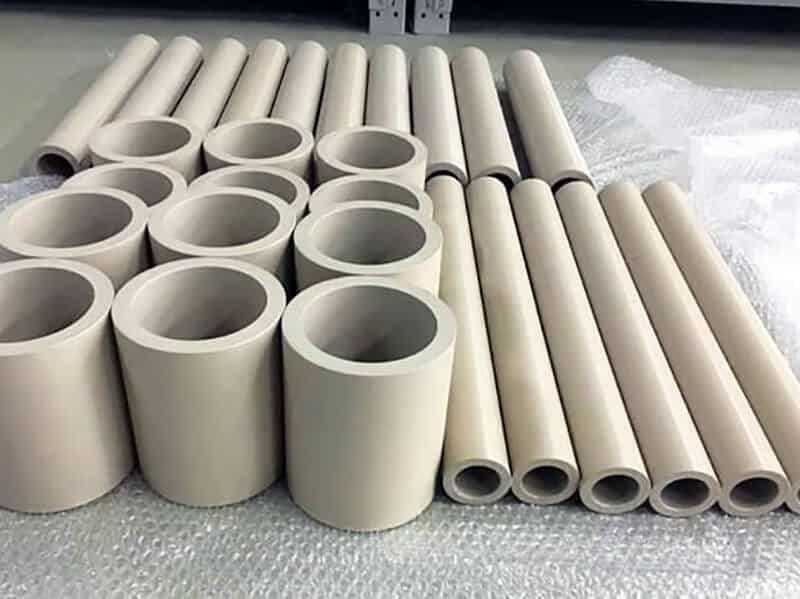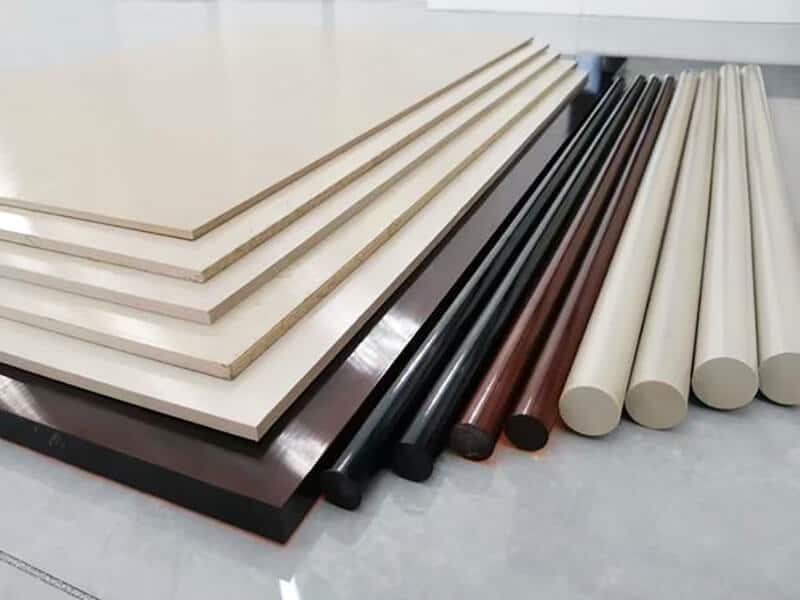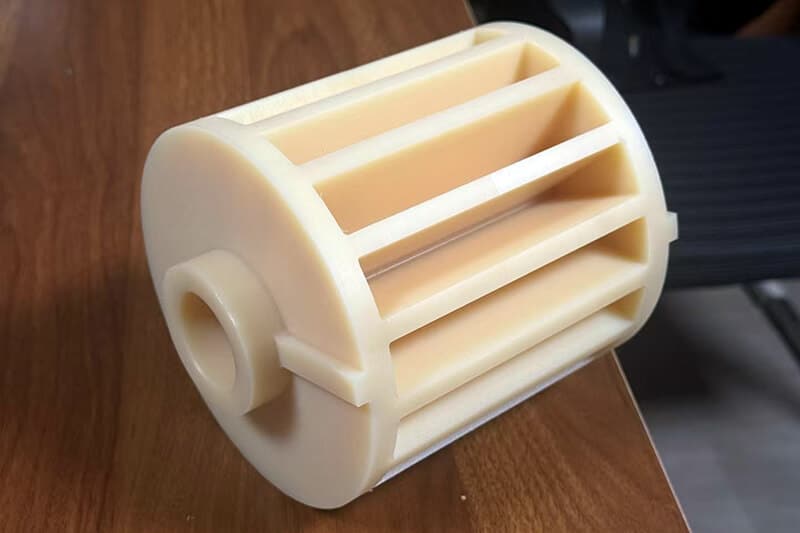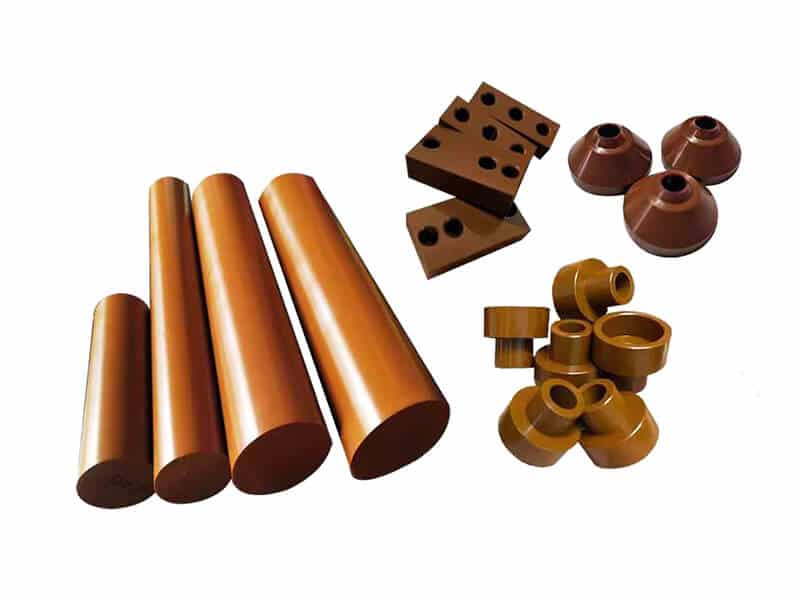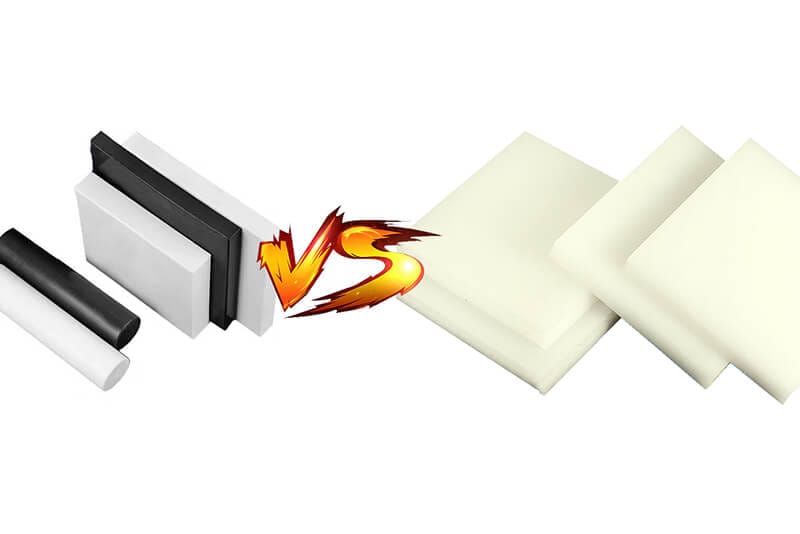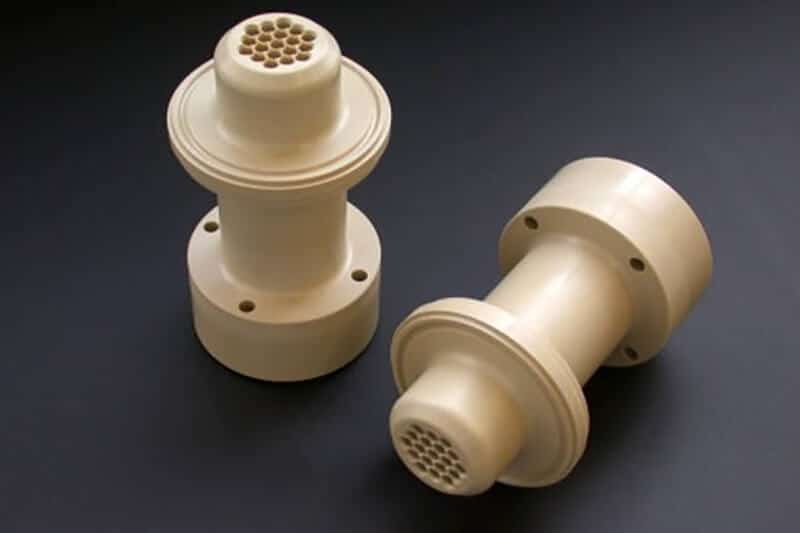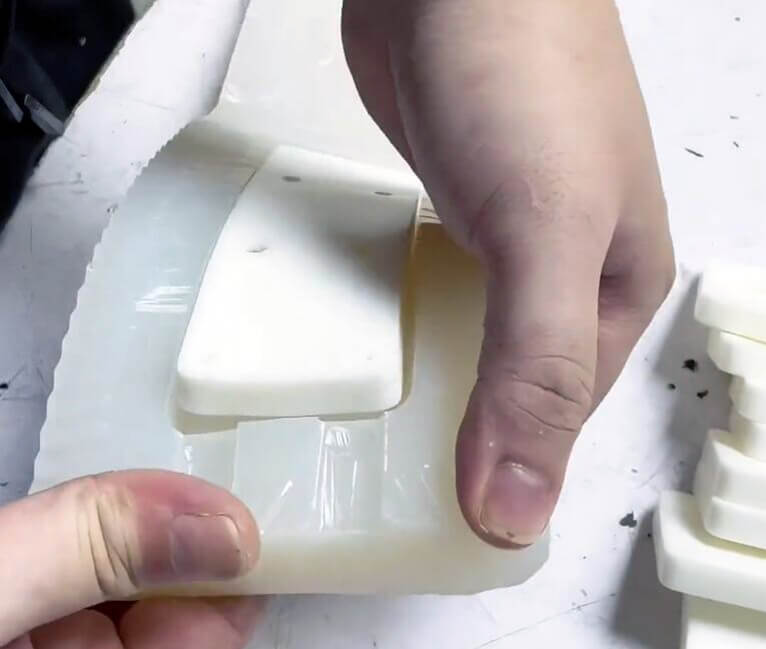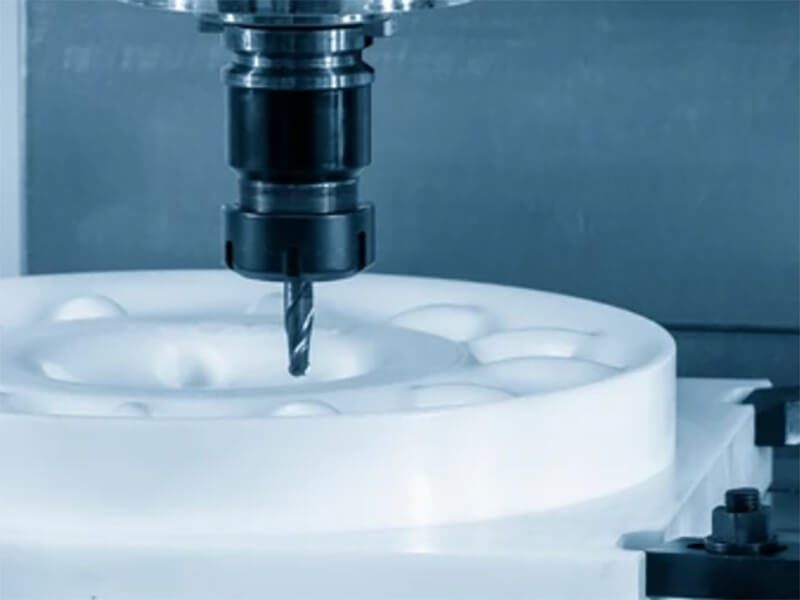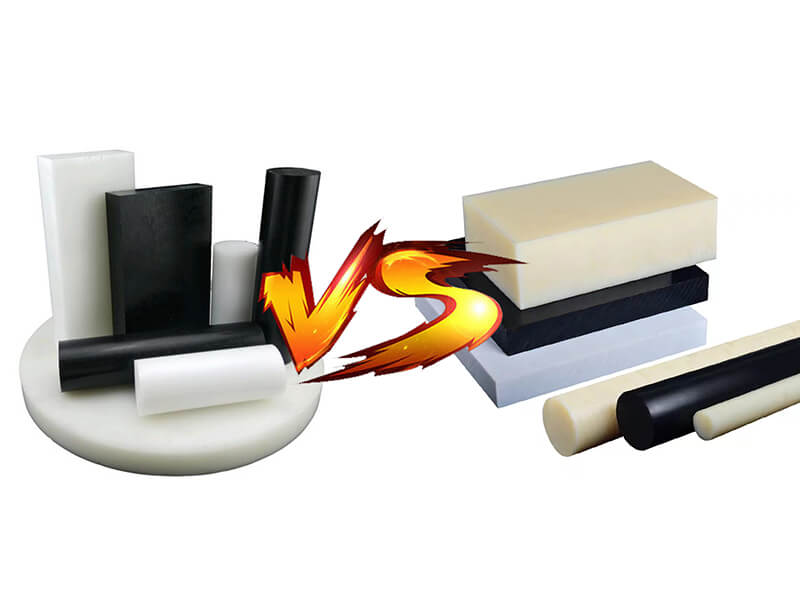PEEK Plastic Explained: Material, Properties, and More!
Learn about PEEK plastic, a durable thermoplastic known for its temperature and chemical resistance. Find out its unique properties and applications.
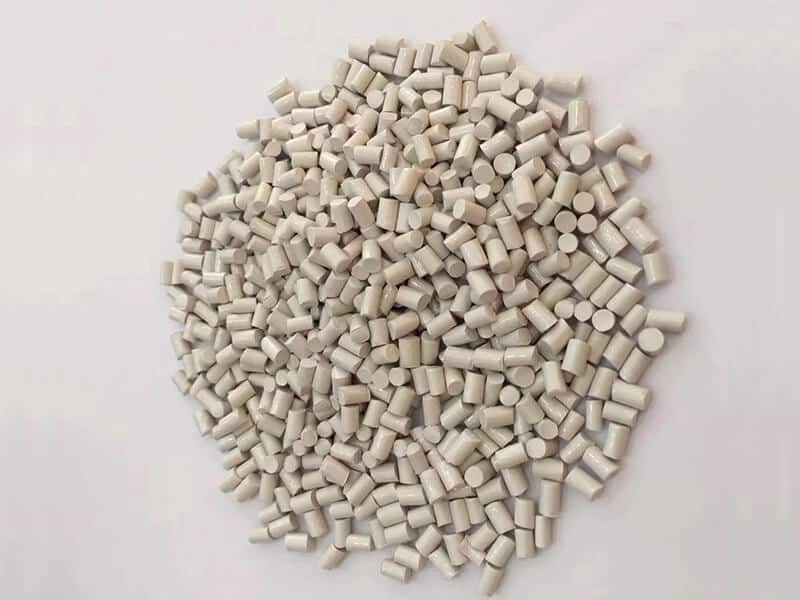
When it comes to high-performance materials, PEEK is likely the game changer in the plastic world. What can you expect from premium-grade plastic? Total biocompatibility, resistance to gamma radiation and X-rays, pure radiolucency, or low to no toxicity—PEEK stands out in all aspects.
Even due to its unique technical specifications, it is now a demanding choice in the fields of innovation and creativity. But there’s so much more to discover about this popular thermoplastic. Join us and learn what makes PEEK so special!
What is PEEK Plastic?
PEEK plastic is a high-performance thermoplastic that has both crystalline and non-crystalline areas. The plastic is highly known among its similar polymer group. It is part of a much larger class of Polyaryletherketone polymers. The family includes different types of similar polymers, such as PEK, PEEKK, and PEKK.
It is the perfect plastic, commonly used in applications where high wear, temperature, or water resistance is needed. The unique physical and chemical properties of this high-quality plastic ensure it is well-suited for use in all demanding applications, such as aerospace, automotive, medical devices, electronics, oil and gas, chemical processing, and even food packaging.
Primary Properties of PEEK Plastic
PEEK is such a high-grade material that supports any application. Before getting to the details, let’s take a quick glimpse at the basic properties of this high-quality polyetheretherketone:
1) Physical Properties
| Physical Properties | Testing Method | Unit | Value |
|---|---|---|---|
| Density | ISO 1183-1 | g/cc (g/m3) | 1.3 |
| Water Absorption. 24 hrs | ISO 62 | <0.05 |
Due to its density of only 1.3 g/cc, PEEK plastic is lightweight and easily handled in applications. Plus, as you can see in the table, it absorbs less than 0.05% of water in 24 hours, which is very low, and it remains dry in humid conditions.
2) Mechanical Properties
| Mechanical Properties | Testing Method | Unit | Value |
|---|---|---|---|
| Tensile Strength | ISO 527-2 | MPa | 105 |
| Tensile Modulus | ISO 527-2 | MPa | 4000 |
| Tensile Elongation (Break) | ISO 527-2 | 15 | |
| Notched Charpy Impact Strength | ISO 179 | KJ/m2 | 5.6 |
| Flexural Strength | ISO 178 | MPa | 160 |
| Flexural Modulus | ISO 178 | MPa | 4000 |
| Rockwell Hardness | ISO 2039-2 | HRM | 100 |
| Impact strength | ASTM D256 | J/M | 185 |
PEEK is a very strong material with robust mechanical properties. Its tensile strength is 105 MPa, which allows it to handle pulling force without damage.
Plus, with a tensile modulus of 4000 MPa, the PEEK is very stiff and doesn’t bend easily. Also, it can absorb sudden shocks with an impact strength of 5.6 KJ/m² and resist bending with a flexural strength of 160 MPa.
3) Thermal Properties
| Thermal Properties | Testing Method | Unit | Value |
|---|---|---|---|
| Thermal Conductivity | ISO 8302 | W/(m•K) | 0.5 |
| Coefficient of Linear Thermal Expansion (0-150℃) | ISO 11359-2 | 10-6/K | <65 |
| Long-time Operating Temperature | UL 746B | °C | 240 |
| Heat Deflection Temperature | ISO 75-2 | °C | >150 |
PEEK has excellent thermal properties, which help it perform well in heat. With its 0.5 W/(m•K) thermal conductivity, it doesn’t let heat pass through easily.
Even the coefficient of linear thermal expansion is less than 65 x 10⁻⁶/K, which keeps it stable in hot conditions.
4) Electrical Properties
| Thermal Properties | Testing Method | Value |
|---|---|---|
| Volume Resistivity | IEC 62631-3-1 | 1014-1016 |
| Dielectric Strength | IEC 60243-1 | >15 |
| Dielectric Constant | IEC 60243-1 | 3.66 |
| Dielectric Loss | IEC 60243-1 | 2.5*10-3 |
As you see in the table, the volume resistivity of PEEK ranges from 10¹⁴ to 10¹⁶ ohm-meter, which means it resists the electric flow very effectively. Furthermore, the dielectric strength of this plastic is greater than 15 kV/mm, which shows that it can handle high voltage without breaking down.
Different Grades of PEEK Plastic
Now let’s learn about the different grades of PEEK you can choose from for your projects:
1. Unfilled Grade
Unfilled is the most common PEEK plastic used for general purposes. It is available in white, tan, and black. This grade offers high elongation, toughness, and fatigue resistance. It is FDA-approved, so it is mostly found in medical and food-contact uses.
2. Glass-Filled
In this grade, you will find a tiny amount of glass fiber mixed up to 30%. Glass enhances the strength of this PEEK version, making it less likely to bend or change shape. You will find this in natural/tan or black colors.
3. Carbon-Filled
This PEEK grade is made up of up to 30% carbon fiber mixing. The fibers improve the stability of the materials and make them more resistant to deformation. It is formulated for robust wear resistance and can carry up to 3.5 times more load than other grades.
4. Antistatic PEEK
Anti-Static PEEK is designed for anti-static properties. You will find it as a coating on various engineering plastics that gives them thermal and chemical stability. Plus, its excellent mechanical toughness ensures that the coating is robust and durable, even in demanding conditions like electronics, automotive, or aerospace.
5. Bearing Grade
Bearing grade PEEK is filled with a few high-grade materials, like carbon fibers and PTFE. This PEEK grade is manufactured to help reduce friction, making it suitable for parts that need to spin or rotate, such as bearings, gears, bushings, and seals.
Its high load-bearing capacity, combined with low friction, ensures continuous motion and can handle heavy loads in applications. Bearing-grade PEEK usually comes in grey or black.
6. Conductive Grade
Conductive PEEK is engineered for electrical conductivity to use in shielding and grounding applications. It controls or stops static electricity, like in electronics. However, conductive PEEK still keeps the strength and durability of regular PEEK while adding the ability to conduct electricity.
The Key Characteristics of PEEK Plastic
Now let’s highlight some key characteristics of Peek that make it stand out in various applications:
Final Words
PEEK is a perfect plastic, but it is very expensive. Therefore, many engineers are looking for an alternative that offers part of the properties and can meet the requirements for their projects.
UVTECO is an expert in engineering plastic in China. If you are looking for an alternative to PEEK plastic to reduce the cost of your project, contact UVTECO now!
Related Blogs

Looking for a trustworthy Supplier
Need a Trustworthy Supplier of Plastic, Foam, Sponge, Rubber, Metal, and Machining Solution. Click the Button, We Will Be In Touch With You As Quickly As Possible.

